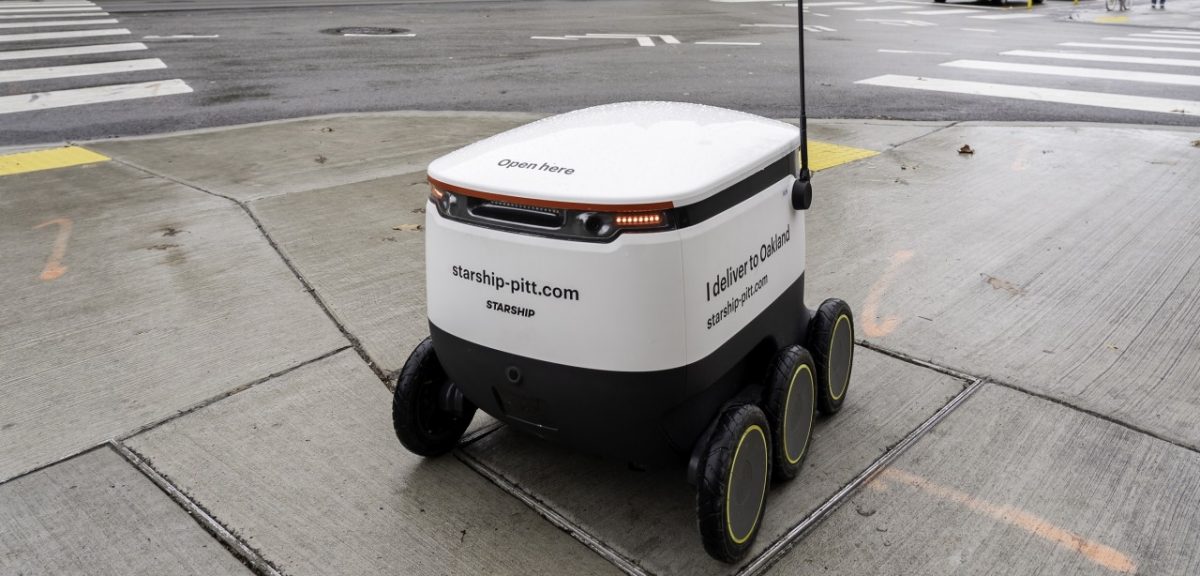By Bernard Marr
One thing that the novel coronavirus COVID-19 did for all of us was to push us outside comfort zones and to adapt to new ways of working and living no matter how resistant we might be. From enabling telecommuting for workers who hadn’t done so prior to tackling video conferencing, we expanded our horizons and changed as a result. Another thing many were exposed to for the first time during this pandemic was autonomous delivery robots. I expect that like my family, who has used autonomous delivery robots for years now but increased our reliance on them to stay away from busy shops while social distancing, many will now want to keep using this convenient technology in a post-coronavirus world.
Massive Growth of Robot Delivery
The coronavirus outbreak may have limited business for many companies, but if you happened to be able to offer robots for delivery service like Starship Technologies could, business is booming. Robotic delivery services can promise contactless delivery, a highly sought-after service under mandates of social distancing. While autonomous delivery robots were already in use in some urban areas, airports, universities, hotels and large corporate campuses prior to the pandemic, demand for them is “expanding exponentially” since they couldn’t be infected with the novel coronavirus as human delivery drivers could. In Phoenix, Ariz., residents within a half-mile radius of Venezia’s New York Style Pizza could even get their pizza delivered by a robot.
Food and Medical Deliveries During Coronavirus
The six-wheeled delivery robots of Starship Technologies started by two Skype co-founders in 2014 were the ones my family relied on to deliver food while we were on lockdown for coronavirus. These bots can navigate around people and public spaces without a human driver. What was first appealing due to the novelty became routine during the pandemic to get small grocery or take-out orders from restaurants.
Although Starship’s bots were in operation for years, the company is experiencing a surge of interest by many companies, including restaurants, grocery stores, and other delivery service companies as human delivery personnel either get ill or fear getting infected by the coronavirus. These bots have already completed 100,000 autonomous deliveries and traveled more than 500,000 miles.
Self-driving vans by start-up UDI delivered food when China was under lockdown during the pandemic. These vans and delivery robots rely on technology such as cameras, lidars, and deep-learning algorithms to successfully complete missions. Autonomous delivery vehicles help provide contactless delivery but might be the viable answer to closing the gap between the global desire for deliveries (quickly) and the labor shortage in a logistics system demanded by companies such as Alibaba that is preparing to handle 1 billion packages per day.
Chinese company JD.com was also quick to fast-track its autonomous delivery systems that resemble mini electric vans to make medical deliveries during the outbreak.
Bot Delivery Coming to a Street Near You
It’s just a matter of time—and the timetable has gotten a boost thanks to coronavirus—before delivery bots will become the new normal in most of our cities. Amazon completed a successful test run in Washington and then launched in Southern California in 2019 to use autonomous robots to complete the “last mile” of the delivery process (from the company’s local storage hub to the recipient’s address). The company’s battery-powered bot called Scout is about the size of a large cooler and can deliver small- and medium-sized packages. Its powerful sensors help it avoid obstacles along its path, including people, pets, trash cans, and even cars backing out of driveways. To accelerate the launch of these bots nationwide, Amazon is using virtual maps of American cities and having the bots run delivery simulations.
Amazon isn’t the only company getting into the autonomous robot delivery business. Many companies already create robots that serve enclosed premises such as corporate campuses, hospitals, and universities and might soon be seen on city streets. These bots deliver paperwork, food for snacks and lunches, lab tests, and more. Some of these companies are backed by large organizations such as Toyota and ThyssenKrupp or are off-shoots of well-known companies such as Segway and are all trying to develop their particular niche of service in autonomous delivery robots.
After the outbreak is controlled, we won’t go “back to normal” but will settle into a new normal. That new normal will likely have autonomous delivery robots in our workplaces, public spaces, and on our streets.
About Bernard Marr
Bernard Marr is an internationally best-selling author, popular keynote speaker, futurist, and a strategic business & technology advisor to governments and companies. He helps organisations improve their business performance, use data more intelligently, and understand the implications of new technologies such as artificial intelligence, big data, blockchains, and the Internet of Things.
LinkedIn has ranked Bernard as one of the world’s top 5 business influencers. He is a frequent contributor to the World Economic Forum and writes a regular column for Forbes. Every day Bernard actively engages his 1.5 million social media followers and shares content that reaches millions of readers.
